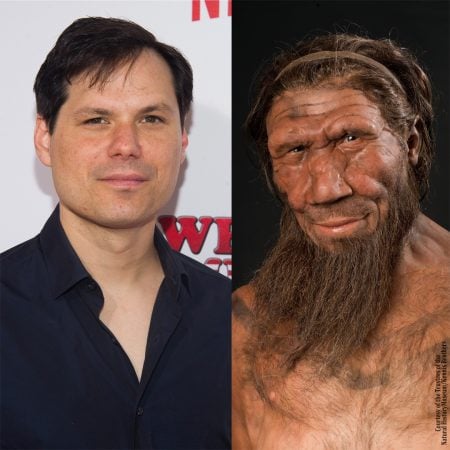
Join our mailing list for the latest news on Mobituaries, plus receive recommendations and exclusive offers on all of your favorite books and authors from Simon & Schuster.
By clicking “Sign Up” I acknowledge that I have read and agreed to the Privacy Policy and Terms of Use.
Join our mailing list for the latest news on Mobituaries, plus receive recommendations and exclusive offers on all of your favorite books and authors from Simon & Schuster.
By clicking “Sign Up” I acknowledge that I have read and agreed to the Privacy Policy and Terms of Use.
From “Quest for Fire” to “Encino Man” to Geico Commercials there have been many depictions of cave people and Neanderthals in pop culture over the years. And let’s just say, most have not been very kind or accurate, they are usually stereotyped as brutish, howling, and stupid.
On the most recent episode of CBS News’ hit podcast “Mobituaries” Mo Rocca explores why Neanderthals have had such a bad reputation. He interviews some of the top Neanderthal experts around including Professor John Hawks from the University of Wisconsin at Madison.
“The Neanderthals are a group that doesn’t have an advocacy they don’t have a lobby. There’s not Neanderthal representatives calling their congressman. And so as a consequence if you thought something bad about the past, they were a convenient group because they weren’t going to complain.”
Kate Wong - a senior editor of Scientific American – tells Rocca of a Neanderthal skeleton found in the town of La Chapelle aux Saints in France in 1908 and how it was badly misinterpretated by biologist Marcel Boule
Says Wong, “the image that kind of came out of his work was hairy and pretty apelike.”
That fossil was called “the Old Man of La Chapelle” just happened to be an older arthritic individual which explained why it did not stand upright. It set back the public’s perception of Neanderthals for generations.
But things are changing for the Neanderthals. Recent incredible breakthroughs out in the field and in the lab have shown that our extinct human cousins were pretty amazing and on par with modern humans cognitively and creatively.
Neanderthals did cave paintings, wore jewelry, and created sticky pitch in a complicated process to attach their tips to their spears when hunting.
Says Hawks, “if I had to assign an engineering class to figure out how this was done, they would have a hard time of it. “
Perhaps the most incredible recent breakthrough on this topic has been that most humans of today carry with them a certain percentage of Neanderthal DNA. Rocca talks to Princeton professor of genomics Joshua Akey to find out what it means to be part Neanderthal.
“We have always said that our genomes are a mosaic of different ancestors and I think what we've learned more recently is it's a mosaic of both recent ancestors and very distantly related different types of human ancestors.”
For this episode of Neanderthals, Rocca welcomes his friend comedian and author Michael Ian Black whose genetic test results showed he was a whopping 2.9% Neanderthal.
Says Black, “If they had told me only how much Neanderthal I am I would have paid twice the amount for the test.”
Episode Extras
Check out the book "Navel Gazing" to read about how Mobituaries guest Michael Ian Black took a genetic test and learned he is 2.9% Neanderthal!



